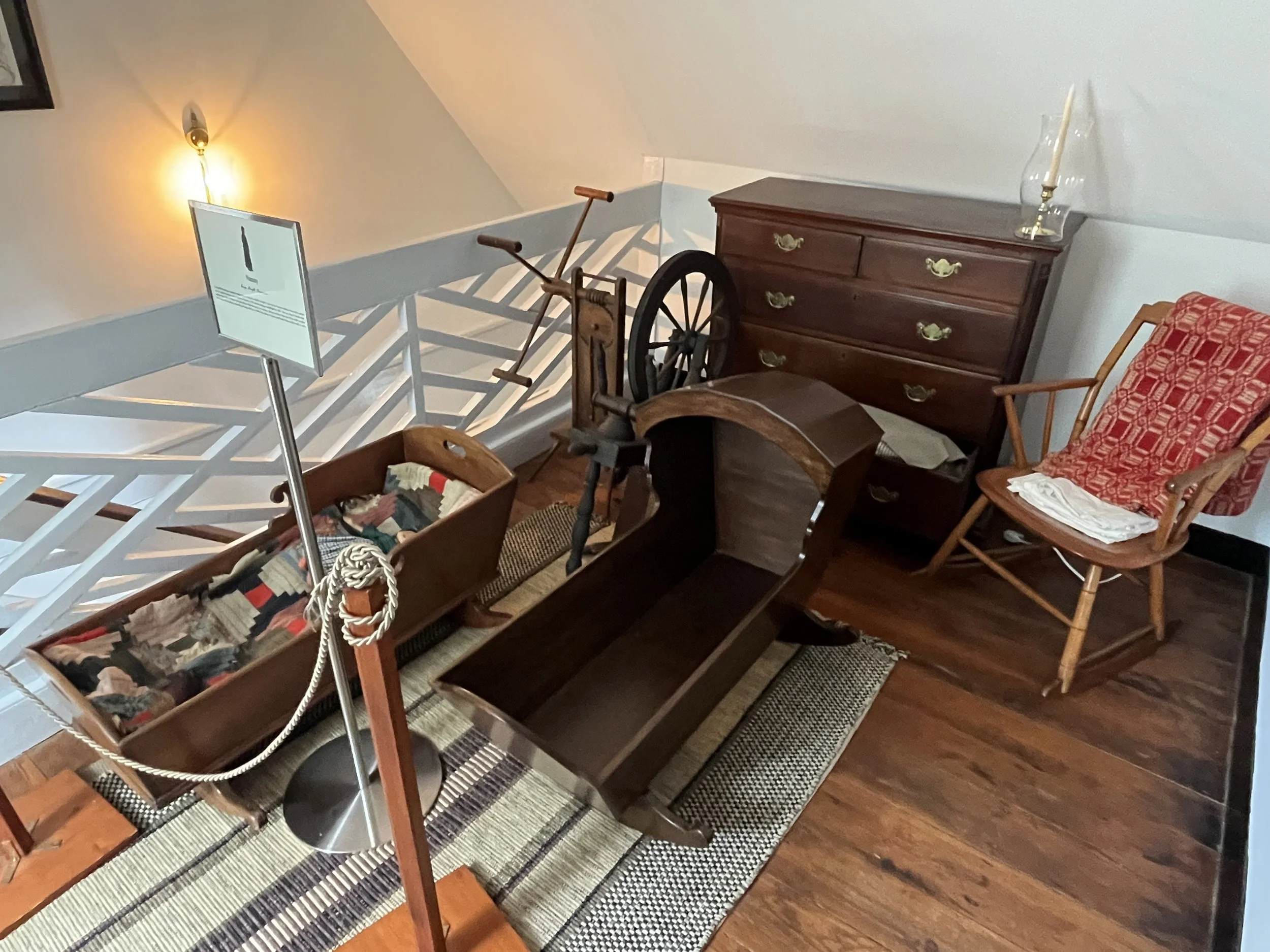Children & Guest Quarters
Colonel William Preston and Susanna Smith Preston had twelve children together. Unlike many couples, William and Susanna saw each of their children survive birth and early childhood. Sadly, their fifth child, Ann, died in 1782 at the age of 13 after contracting an illness. Children at Smithfield shared bedrooms and, oftentimes, shared beds as well. Luckily, not all 12 children would have lived here at the same time due to age gaps.
Children’s Room
The Prestons had 12 children, 11 of which lived into adulthood - 5 boys and 7 girls. Ann Nancy was the only Preston child to die and was the first burial in the Preston Family Cemetery in 1782. The first child to be born at Smithfield was James Patton Preston (portrait in the Main Passage) on June 21, 1774. James was the 8th child of William and Susanna. The room we interpret as the children’s room may have been the girls’ room and the boys would have slept in the rooms across the hall, where the administrative offices are now located.
Upper Landing
This landing illustrates the complex relationships of the carer and the cared for (enslaved nanny and Preston children). As young children, the enslaved caregiver/nanny would be seen as a literal mother figure to the children. As the children came of age to start inheriting property/assets enslaved workers, including their caregiver, became their property. The Preston children grew up in a world where this was the norm in their lives, so it likely would not have been surprising to them.
The enslaved caregiver would have been well aware of this eventual shift and it may have caused extremely complex feelings. While the enslaved caregiver was responsible for taking care of the Preston children, it's likely that she had a family of her own. She had no control over what was done to her family, such as being divided or sold away. In this particular position, we have the complex juxtaposition of the Preston children being well-cared for and looked after, while enslaved children of the same or similar ages, existed as property.
This enslaved caregiver would have had to have much courage and resilience to navigate these situations. We identify a woman named Nanny on this landing, but Nanny would have been one of many child-minders that the Prestons owned. Another such woman who cared for later generations of Preston children was named Virginia Fraction Capers. Virginia is buried within the boundaries of the Preston Family Cemetery with the individuals who owned her. We do not know why this is the case; it is unconventional, but it speaks to the nature of the complicated relationships that must have existed. We know that Virginia chose to stay with the Prestons after emancipation, though we do not know why she chose this. It could be because of her closeness with the family, but more likely it was because she either a) had few resources/help to move elsewhere and/or b) she, like many others at the time, saw Smithfield has her home, and viewed it as her personal right to live on the property after her enslavement.
For more information on what the childrens lives would have been like see the video below :
Media Collections, The Colonial Williamsburg Foundation.




